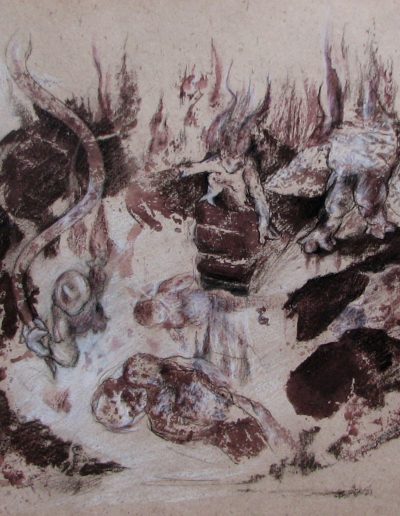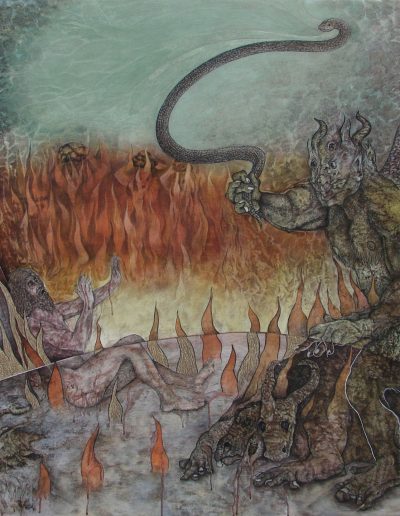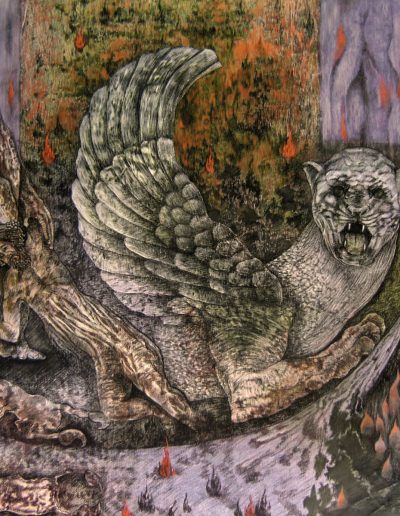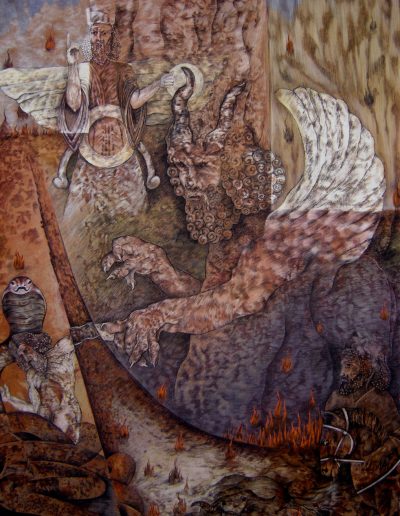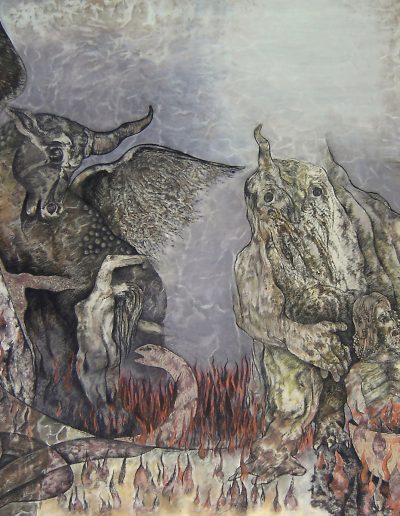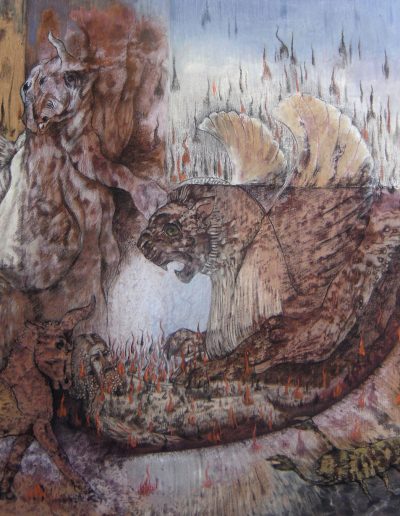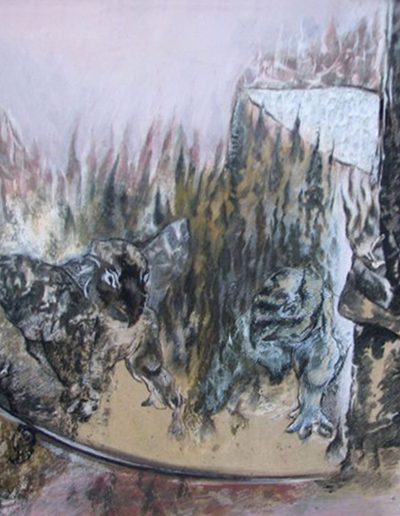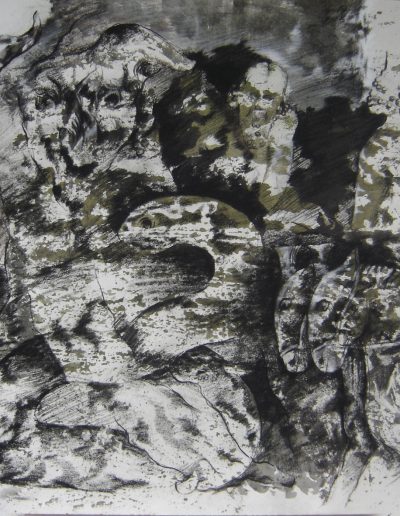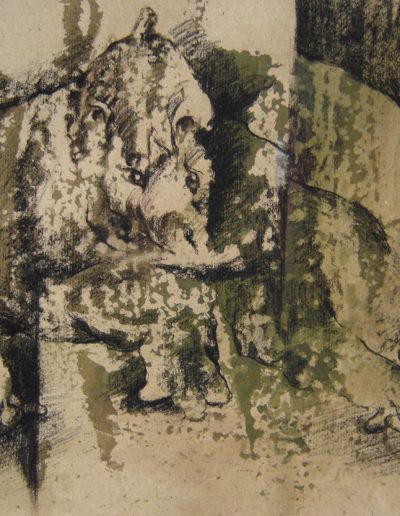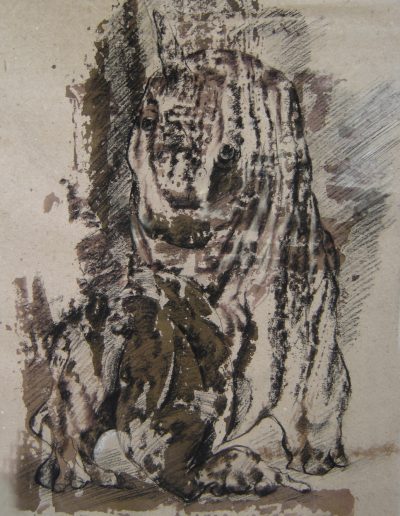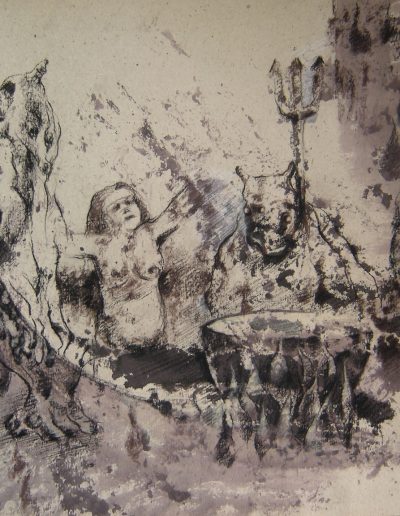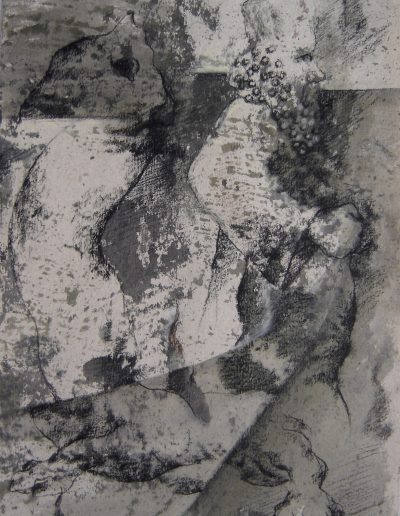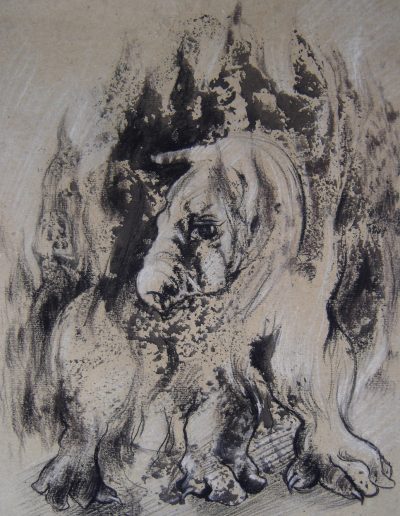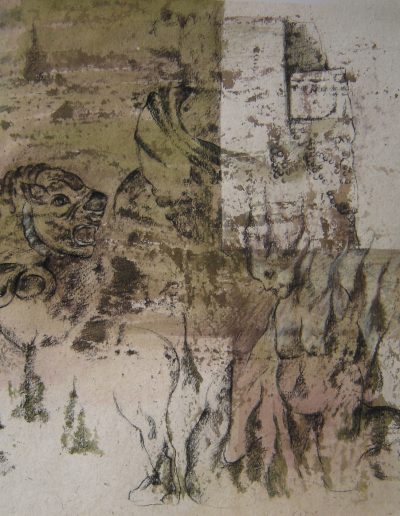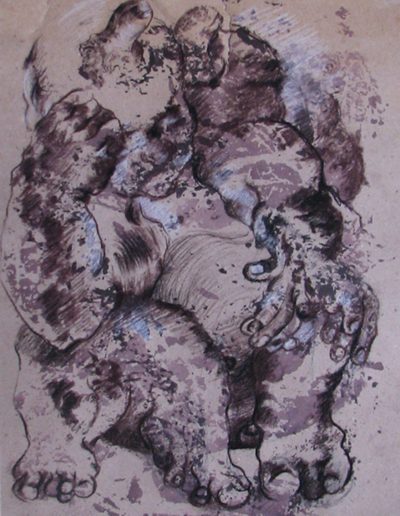ارداویرافنامه
اول: مسأله خیر و شر و نظام جزا و پاداش از دیرباز ذهن بشر را به خود معطوف کرده است بطوریکه در تمام ایدئولوژیها و نظامهای فکری در مورد آن اندیشیده شده است. بازتاب این نوع نگاه را در آثار ادبی و هنری با نمودهای متنوع در اغلب تمدنها و فرهنگها میتوان جستجو کرد. دین زرتشت بهعنوان یکی از ادیان الهی نیز از این قاعده مستثنی نبوده و به انحاء مختلف به این مسأله پرداخته است. یکی از این نمودها کتاب ارزشمند ارداویرافنامه است که بهدلیل بروز شرایط خاص زمانی (حدوداً سیصد سال پس از حملهی اسکندر مقدونی) نگاشته شده است. این متن ارزشمند که حاصل مکاشفه هفت روزهی ارداویراف مُغ بزرگ زرتشتی در عالم خلسه است چند صد سال قبل از کمدی الهی دانته نگاشته شده و بیشک اگر نسبت به آن اوُلی نباشد از آن کمتر نیست. جایجای اوراق این کتاب سرشار از فضاهایی تصویری و بسیار بیانگر و الهامآور است. شایان ذکر است، در این کتاب به سه فضای دنیوی، بهشتی و دوزخی اشاره شده است که در مجموعه حاضر، قسمت دوزخ مورد الهام قرار گرفته و دستمایهی تجربه گشته است.
دوم: حمید فام را از دوران دانشجویی و هفت سالی است که میشناسم و در تمام این مدت او را رصد کردهام؛ در برداشتهای آزاد و نقاشانه او از متن ارداویرافنامه با فضاهایی وهمآور و مالیخولیایی مملو از اسطورههای آشنا و یا وهمی مواجهیم. او ماهرانه ما را به جهانی میبرد که علیرغم هیمنه و هیبت غریب آن، در عین تأثیر وهمآور آن در ما احساسی از اینهمانی و آشنایی ایجاد میکند. شاید چیزی از خاطرات دیرسال قومی یا کهن الگوها عامل این احساس قرابت است. هرچه هست حکایت از قابلیت و قدرت او در سامان دادن این جهان خیالی و ایجاد فضاهایی تأثیرگذار و اساطیری به زبان تصویر دارد که نه تنها نیاز به توان و احاطه به زبان و کنش نقاشی دارد، بلکه برداشت و تأثر و تأثیر او از جایجای این متن کهن و تبدیل آن به ایماژی خلاق نیز درخور توجه و اعتناست. این مهم میسر نمیشد مگر با سالها تلاش و تمرین و تجربهاندوزی و آزمون و خطا و مطالعه عمیق در حوزهی هنرهای تجسمی که این همه را در او شاهد بودهام.
اگر این مجموعه را اولین تجربهی متمرکز او در حوزهی نقاشی بدانیم لاجرم باید در آینده نه چندان دور منتظر ظهور یک هنرمند تمامعیار و صاحبسبک در هنر کشور عزیزمان باشیم.
منصور طبیبزاده
پاییز ۱۳۸۶
First: The issue of good and evil, along with the system of punishment and reward, has long captivated the human mind, to the extent that it has been contemplated in all ideologies and intellectual systems. The reflection of this perspective can be traced in literary and artistic works, manifesting in diverse forms across most civilizations and cultures. Zoroastrianism, as one of the divine religions, is no exception to this rule and has addressed this matter in various ways. One such manifestation is the valuable book Ardavirafnameh, which was written due to specific historical circumstances (approximately three hundred years after Alexander the Great’s invasion). This significant text, the result of the seven-day visionary experience of Ardaviraf, the great Zoroastrian priest, in a state of trance, was composed several centuries before Dante’s Divine Comedy. Undoubtedly, if it is not superior to it, it is certainly no less remarkable. The pages of this book are replete with vivid, expressive, and inspiring imagery. It is noteworthy that the book refers to three realms—earthly, heavenly, and infernal—with the present collection drawing inspiration from the infernal section, which has served as the basis for this artistic exploration.
Second: I have known Hamid Fam since our university days, for about seven years, and throughout this time, I have closely observed him. In his free and painterly interpretations of the Ardavirafnameh text, we encounter haunting and melancholic atmospheres filled with familiar or fantastical mythological elements. He skillfully transports us to a world that, despite its strange and imposing grandeur, evokes a sense of familiarity and identification within us, even amidst its eerie impact. Perhaps this sense of affinity stems from ancient ethnic memories or archetypes. Whatever the source, it speaks to his ability and power to construct this imaginary world and create impactful, mythological spaces through the language of imagery. This requires not only mastery and command of the language and practice of painting but also his profound engagement with, and creative transformation of, this ancient text into imaginative visuals—an achievement worthy of attention and admiration. Such a feat would not have been possible without years of effort, practice, experience, trial and error, and deep study in the field of visual arts, all of which I have witnessed in him.
If we consider this collection as his first focused endeavor in the realm of painting, we must inevitably anticipate the emergence of a fully realized and distinctive artist in the art scene of our beloved country in the not-too-distant future.
Mansour Tabibzadeh
Autumn 2007


